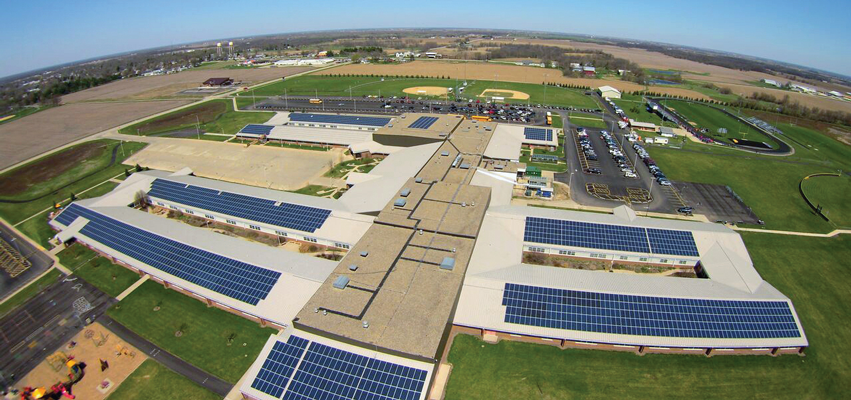Any business or organization that owns and operates buildings has a great opportunity to realize savings.
Today’s business climate is one that can keep business owners and managers up at night, searching for any long-term opportunity to decrease costs. This challenge can be exhausting in the attempt to avoid reducing hours/benefits or lowering rates/prices.
However, there are opportunities to reduce the cost of doing business that often go overlooked. From small retail businesses to large business offices to global corporations—not to mention public-sector institutions, or any organization that owns a facility—most think about energy expenses either once a month when they pay their utility bill (as a matter of course and habit), or by utilizing energy-efficient products and processes (e.g., LED lighting, automated entry-exit lighting systems, HVAC system improvements, automatic setback thermostats and numerous other options).
Central Illinois pays comparatively inexpensive rates for energy (electricity and natural gas), driven by the abundance and lower production costs of coal, as well as the lack of a mandatory Renewable Portfolio Standard. In neighboring states, higher energy rates provide considerable incentives to move toward newer energy technologies. Given today’s restrictions on coal and environmental interests, coal will likely become the raw material of last resort for energy suppliers here and across America. But there is enthusiasm and hope when it comes to new technologies related to energy production.
Solar, wind, geothermal and battery-storage technologies have all improved in ways that few might have guessed just a few years ago—and they continue to advance in terms of the costs to produce, ability to install, efficiencies, product affordability and payback.
Moreover, the means to take the energy captured or produced at an owner’s site and integrate it into an electric system behind the meter—or entering into a power purchase agreement utilizing the larger distribution and transmission system—has likewise improved. This allows owners to utilize alternative technologies to generate energy at their sites or purchase renewable energy from off-site generation facilities and feed it directly into their building infrastructure, in tandem with the traditional energy transmission system.
 These installations (solar, wind, et al.) can be financed over a number of years—and will continue to provide less expensive electric power for owners well beyond 20 years. The installed cost of solar, for example, has been dropping by seven to 12 percent each year for the last four years. This factor, coupled with numerous grants, rebates and other incentives, can provide payback periods of five to eight years or less on such systems. The efficiencies in energy production and reduction in energy costs can be further improved by taking advantage of numerous incentives from our local utility company for installing LED lighting, more energy-efficient HVAC systems, programmed thermostats, Energy Star appliances, and more.
These installations (solar, wind, et al.) can be financed over a number of years—and will continue to provide less expensive electric power for owners well beyond 20 years. The installed cost of solar, for example, has been dropping by seven to 12 percent each year for the last four years. This factor, coupled with numerous grants, rebates and other incentives, can provide payback periods of five to eight years or less on such systems. The efficiencies in energy production and reduction in energy costs can be further improved by taking advantage of numerous incentives from our local utility company for installing LED lighting, more energy-efficient HVAC systems, programmed thermostats, Energy Star appliances, and more.
To summarize: 1) on-site energy production technologies have become extremely efficient, functional and effective; 2) payback periods are getting shorter, while the reduction in energy costs is getting larger; and 3) there are many opportunities for financing from both private and public sources, including grants and rebates. Any business or organization that owns and operates buildings has a great opportunity to realize savings through these systems, with little to lose by exploring the options.
There are numerous examples of successful alternative-energy installations nearby, including: Farmington Central School District, Rankin Elementary School in Pekin, Children’s Discovery Museum in Normal, Elmwood High School and Fairbury’s Wastewater Treatment Facility. iBi
Steve Smith is Director of Business Development/Renewable Energy with Farnsworth Group, Inc.


